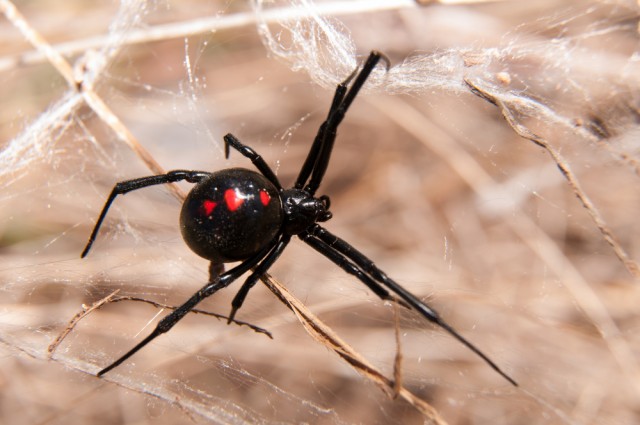Scientists have successfully managed to extract DNA from spider webs, which not only identified a web’s architect but also what insects the spinner was feeding on. The proof-of-concept study, published in PLOS ONE, used captive southern black widow spiders to show that their webs contained enough fragments of DNA to potentially provide a reliable, non-invasive biomonitoring technique. Not only could the researchers identify the inhabitants of a freshly used web, but even one that had been vacant for 88 days.
The researchers collected the spiders’ silk by inserting a sterile stick into the web and using it like a spool, winding the strands around it. They then took these samples, which had no visible bits of either spider feces or insect remains on them, and amplified the fragments of DNA present using a modified method normally reserved for shed reptile skins. This allowed the researchers to conduct DNA barcoding, which told them if any black widow spider DNA was present. They found not only the spiders’ DNA but that from their prey, too.
Spiders can be important health indicators of both naturally occurring and agricultural ecosystems as they are one of the major predators of insects. But with over 45,000 species of arachnids existing, they can be difficult to identify, especially from sight alone. By sampling their DNA, researchers can be far more confident of the species present, but this requires killing the arachnids. In addition, traditional sampling methods, such as pitfall traps and sweep netting, can be difficult and easily skewed by the often low number of specimens sampled relative to the number present in an area. Yet the webs that the spiders produce are often far easier to detect, and could now be used as a reliable biomonitoring tool that doesn’t require the death of its builder. 
Non-invasive genetic techniques, as they’re known, are frequently used when studying vertebrates, common mammals. Researchers studying wild animals, especially those which are rare and elusive, will often collect animal hair and feces in order to get DNA samples. This allows them to monitor not only numbers of the animals in the study area, but also track individuals, family trees, and their interactions. These methods are often much more reliable than standard techniques, such as those based on footprints or visual surveys.
It’s not, however, totally unheard of for zoologists to turn to invertebrates for finding genetic clues about the biodiversity of a region. Molecular studies have found that creatures such as mosquitoes, leeches, ticks and carrion flies all contain enough DNA from the animals on which they feed to allow for species identification. For example, one study was able to determine that mosquitoes in southern Spain were feeding on the rare and endangered Iberian lynx, of which only around 300 are thought to survive in the wild. The idea behind sampling spider webs parallels these earlier studies.
“Sticky spider webs are natural DNA samplers, trapping nearby insects and other things blowing in the wind,” explains Charles Cong Xu, who coauthored the research. “We see the potential for broad environmental monitoring because spiders build webs in so many places.” While the team only conducted this study using captive spiders, the next step is to see if they can get the same results from those out in the wild. If so, it could be a valuable tool added to biologists’ arsenal.












